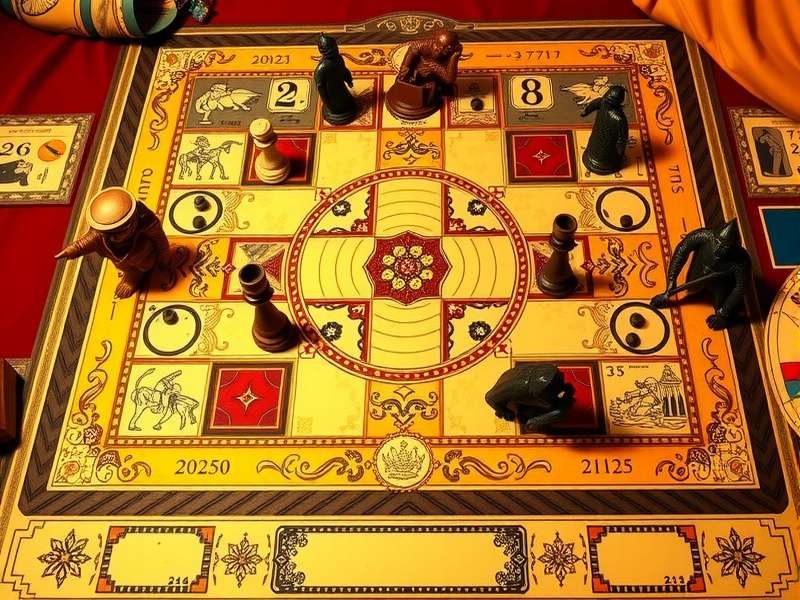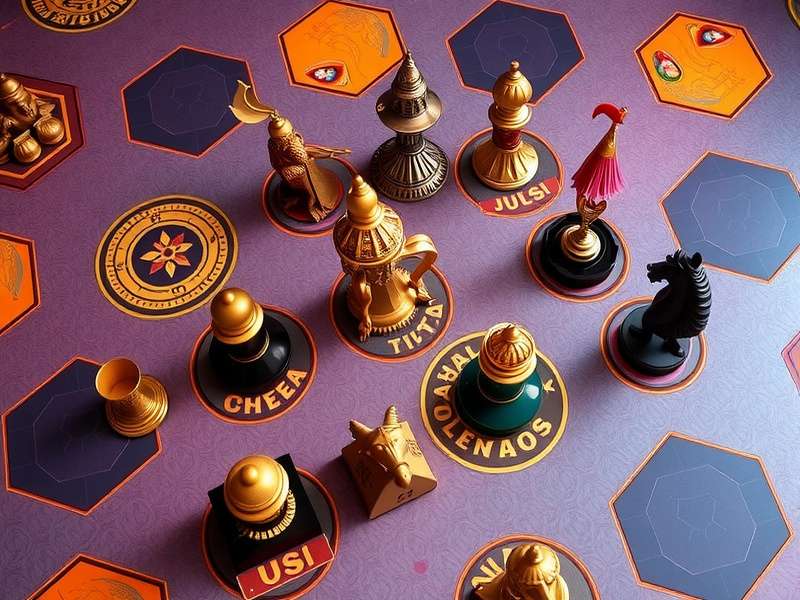Maharaja Cup Challenge: Complete Encyclopedia Guide
✨ Quick Facts:The Maharaja Cup Challenge is a strategic board game combining elements of chess, traditional Indian games, and royal court politics. It has gained international recognition as a premium gaming experience.
TheMaharaja Cup Challengerepresents one of India's most sophisticated contributions to the world of strategic board games. This game beautifully merges traditional Indian gaming principles with modern strategic elements, creating an immersive experience that appeals to both casual players and serious strategists.
Originating from the royal courts of Rajasthan, the game has evolved into a competitive sport with international tournaments and a dedicated community of enthusiasts. TheMaharaja Cup Challengeis not merely a game but a cultural artifact that preserves and celebrates India's rich historical legacy.

Historical Origins & Development 📜
The genesis of theMaharaja Cup Challengecan be traced back to the mid-20th century when Maharaja Shivaji Rao III of the princely state of Rajapur sought to create a game that would entertain his court while teaching strategic thinking to his heirs.
Drawing inspiration from traditional Indian games like Pachisi and Chaturanga (the ancient predecessor of chess), as well as the political maneuvering of royal courts, the Maharaja commissioned the creation of what would become the Maharaja Cup Challenge in 1952.
Royal Origins
Created in the courts of Rajasthan by Maharaja Shivaji Rao III to entertain nobility and teach strategic principles to royal heirs.
Cultural Fusion
Blends elements from traditional Indian games like Pachisi, Chaturanga, and modern strategic board games.
Evolution Through Decades
The 1970s marked a significant turning point for the Maharaja Cup Challenge as it transitioned from an exclusive royal pastime to a commercially available game. The first mass-produced sets were manufactured in Mumbai in 1978, featuring hand-carved pieces and silk-screened boards.
International recognition came in 1992 when the World Board Games Federation officially recognized the Maharaja Cup Challenge as a competitive strategy game. This led to the establishment of formal rules, tournament structures, and an international ranking system.
The digital era brought new life to the game, with online platforms and mobile applications making the Maharaja Cup Challenge accessible to a global audience while preserving its traditional essence.
Game Rules & Mechanics 🎲
Understanding the rules of the Maharaja Cup Challenge is essential for both beginners and experienced players. The game combines simple basic principles with deep strategic complexity.
Basic Setup & Components
The standard Maharaja Cup Challenge set includes a 10x10 game board, 40 playing pieces (20 per player in two distinct colors), four specialty dice, and various tokens representing resources and special abilities.
| Component | Quantity | Purpose |
|---|---|---|
| Game Board | 1 | 10x10 grid with special zones |
| Player Pieces | 40 (20 each) | Main playing units in two colors |
| Specialty Dice | 4 | Determine movement and actions |
| Resource Tokens | 24 | Represent gold, influence, military |
Core Gameplay Mechanics
The Maharaja Cup Challenge is played in turns, with each player attempting to control territory, accumulate resources, and achieve specific victory conditions. The game combines elements of area control, resource management, and tactical combat.
Each turn consists of three phases: the Strategy Phase where players plan their moves, the Action Phase where they execute movements and interactions, and the Resolution Phase where conflicts are resolved and resources are allocated.

Advanced Strategies & Tactics ♟️
Mastering the Maharaja Cup Challenge requires understanding both fundamental principles and advanced strategic concepts. Successful players develop their unique playing style while adapting to their opponent's approach.
Opening Strategies
The initial moves in the Maharaja Cup Challenge set the tone for the entire game. Popular opening strategies include the "Rajput Expansion" which focuses on rapid territorial control, the "Maratha Defense" which emphasizes strong defensive positions, and the "Mughal Gambit" which involves calculated risks for early advantages.
💡 Pro Tip:The most successful opening strategies balance aggression with flexibility, allowing players to adapt to their opponent's moves while pursuing their long-term objectives.
Mid-Game Development
As the game progresses, resource management becomes increasingly important. Players must balance expanding their influence, developing their pieces' capabilities, and preparing for end-game scenarios. The mid-game often determines the ultimate winner of the Maharaja Cup Challenge.
Key mid-game considerations include controlling special board zones that provide ongoing benefits, forming alliances through diplomatic tokens, and anticipating opponent's victory conditions to develop counter-strategies.
End-Game Mastery
The final phase of the Maharaja Cup Challenge requires precise calculation and risk assessment. Players must recognize when to transition from development to pursuing specific victory conditions, whether through territorial dominance, resource accumulation, or achieving specific objective cards.
Successful end-game play often involves bluffing, misdirection, and careful timing of key moves to maximize their impact while minimizing vulnerability to counterattacks.

Tournaments & Competitive Scene 🏅
The competitive landscape for the Maharaja Cup Challenge has grown significantly since the first official tournament in 1985. Today, players from around the world participate in events ranging from local club competitions to international championships.
Major Tournaments
The World Maharaja Cup Challenge Championship, held annually in Jaipur, represents the pinnacle of competitive play. Other significant tournaments include the Asian Maharaja Cup, the European Open, and the North American Maharaja Cup Challenge Invitational.
These events not only crown champions but also serve as gathering points for the global community of Maharaja Cup Challenge enthusiasts, featuring workshops, exhibition matches, and cultural celebrations.
Notable Champions
Throughout its competitive history, the Maharaja Cup Challenge has produced legendary players whose strategies and playing styles have influenced subsequent generations. These champions have contributed to the evolution of game theory and advanced strategic concepts.
| Year | Champion | Nationality | Notable Strategy |
|---|---|---|---|
| 2022 | Priya Sharma | India | Adaptive Resource Control |
| 2021 | Kenji Tanaka | Japan | Precise Timing Gambits |
| 2020 | Marcus Chen | USA | Diplomatic Aggression |
| 2019 | Isabella Rossi | Italy | Positional Sacrifice |
Community & Cultural Impact
Beyond competitive play, the Maharaja Cup Challenge has fostered a vibrant global community. Local clubs, online forums, and social media groups connect enthusiasts who share strategies, organize games, and celebrate the cultural heritage embedded in the game.
The game has also found educational applications, with schools and universities using it to teach strategic thinking, problem-solving, and elements of Indian history and culture.
Conclusion: The Legacy Continues
TheMaharaja Cup Challengestands as a testament to India's rich gaming heritage while embracing modern competitive spirit. As the game continues to evolve and reach new audiences, it preserves the strategic depth and cultural significance that have made it enduringly popular for decades.
Whether you're a casual player enjoying the game's aesthetic and thematic elements or a competitive strategist seeking mental challenges, theMaharaja Cup Challengeoffers a uniquely rewarding experience that bridges tradition and innovation.